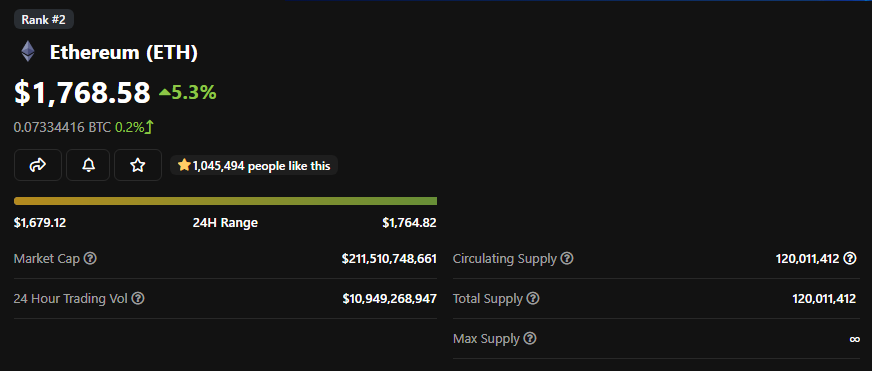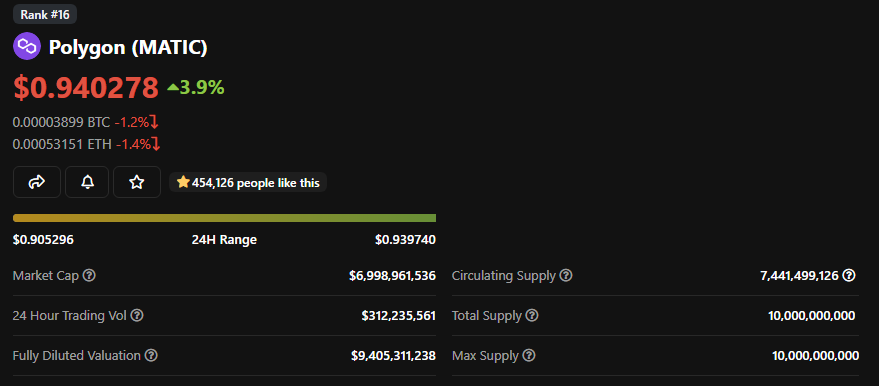Polygon is the interoperability and scalability solution for building Ethereum compatible blockchains.
What is a polygon? What does it do?
Polygon, formerly known as the MATIC network, is a cross-chain scaling solution that provides an infrastructure for building interface blockchain networks. It aims to bring the adaptability and scalability of sub-chains together with the security, liquidity, and interoperability of Ethereum.
Ethereum (ETH) is globally the most effectively used blockchain by far. Ever since it launched in 2013, this open-source decentralized blockchain has experienced rapid growth. It offers smart contracts as a Proof-of-Stake (POS) framework.

However, the rapid adoption of Ethereum comes with exorbitant costs. Exchange fees often exceed the total amount transferred. This is because Ethereum has a large number of customers using the network, which greatly reduces the scalability of the exchange. That’s where Polygon comes into play; it uses MATIC to solve the problems.

The Polygon system has a huge number of members, like block creators, developers, customers, and stakeholders. Polygon clients run several decentralized applications based on Ethereum. Use the MATIC side chain to collaborate with them. Of course, MATIC is a lot cheaper and quicker than other networks.
What is the MATIC coin?
MATIC is the native coin of Polygon. The Polygon token is the primary source of the Polygon system. Aside from being used for currency payments, it’s also used to store tokens to protect its network. Since its rebranding, the MATIC token has received increased its price a lot, following the massive expansion in usage.
How does polygon work?
Polygon’s MATIC sidechain works just like any other proof-of-stake-based blockchain. Its structure is similar to other networks, except that token exchanges, client nodes, local Dapps, validation nodes, etc. are grouped and located on the main Ethereum chain. Polygon has developed a Level 2 network to create interoperable and Ethereum-compatible blockchain networks.
Level 2 scaling solutions refer to off-chain solutions. This includes reducing or eliminating evaluative components from the main blockchain before they are executed elsewhere, such as sidechains. This increases throughput on the main chain and spreads evaluation capability throughout the network.
The Polygon modular system for combining private networks allows developers to ship pre-built blockchain networks in one click. Additionally, it’s very easy for any blockchain to collaborate with another blockchain without any hassle, thanks to Polygon.
Polygon (MATIC) Price Prediction
Although it has been yet delayed, Ethereum is going through a merge. A lot of people in the crypto space believe that ETH will be hitting the 10K per coin when that happens. My opinion is that it’s inevitable. Ethereum will be hitting 5 figures because it has the largest ecosystem.
ETH is currently valued at $1,768.

Ethereum will become a store of value along with the deflationary mechanisms that they’re going to have in place. Polygon, as its best scaling solution is outstanding.
So, if Ethereum goes 6x, and roughly reaches that 10K mark, Polygon as its strongest (or most utilized) scaling solution is bound to go at least 10, 15x, in my opinion.
Polygon is currently at $0.94

Ethereum is the most utilized blockchain, and we need a scaling solution. Polygon exactly solves that problem.
Our price prediction for Polygon MATIC is that it could reach at least the $10 mark. The only debatable variable is when will it happen.
Polygon MATIC Price Prediction – Conclusion
As we have seen, there are compelling reasons to consider Polygon a promising project in the long term. Its features allow for many improvements to the Ethereum blockchain and simplify the work of DeFi platform programmers and NFT creators. The fact that MATIC tokens give the possibility to take part in the governance of the project is another aspect that should not be underestimated, together with the advantage of accumulating tokens through staking.
All in all, a great investment. Certainly, one that has the potential to be the next crypto to explode.




